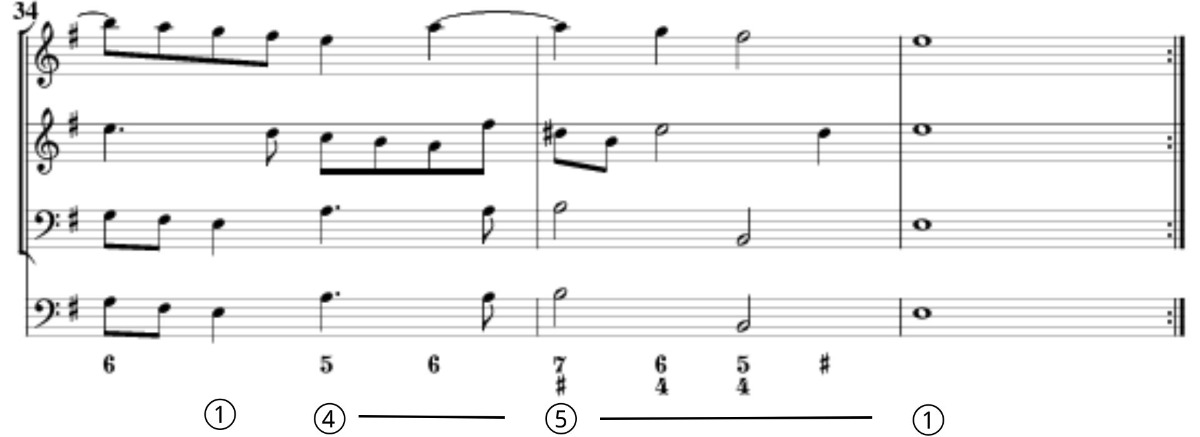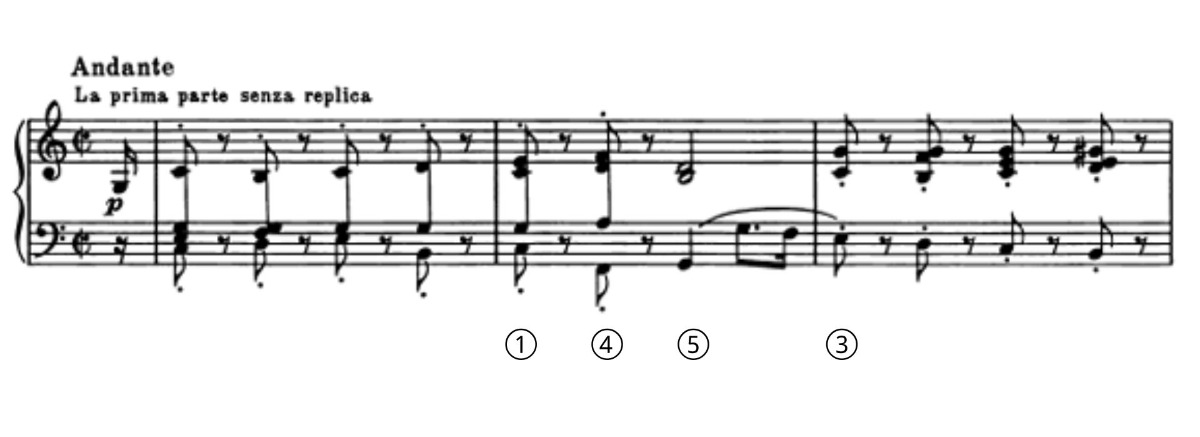Welcome to Try This! Your weekly exploration of musical patterns and partimenti rules.
This week we’re going to look at how two master composers—Arcangelo Corelli (1653 – 1713) and Beethoven (1770 – 1827)—realized these patterns in their compositions. Here is last weeks post introducing the ① ④ ⑤ ①.
Romantic Bassline Project
Is there a harmonic moment that you love in Chopin, either of the Schumann’s Brahms, or Mahler. I’m in the process of analyzing all sorts of romantic period repertoire and creating basslines from that repertoire to explore, improvise with, and learn from!
I know and am exploring the repertoire that I love, but I’d like to hear from you what romantic repertoire you love. What moments, phrases, sections or pieces should I look at from the romantic repertoire?
Share as many excerpts as you want. Here’s a form that will make it easy.
Take a Listen to Corelli’s ① ④ ⑤ ①
This excerpt is from Arcangelo Corelli’s Church Sonata, Op 1 No 2 in E minor. Take a listen to this moment here (careful! it goes fast). Here’s a link to the score on IMSLP, this excerpt is at the bottom of page 13

Notice how the bassline goes ① ④ ⑤ ①. Above ④ you get a 5/3 chord, then a 6/3 chord, taken together that is the 6/5/3 chord we started playing with last week. Composers do this often, this is what I refer to as the suppleness of thinking of intervals above a bass rather than chord). I
f you think “Above ④ you could have a 3rd, a 5th, 6th, or an 8v: any, some or or all of the intervals.”If you wanted to process that in terms of chords you could have an A minor chord in root position, an F# diminised triad in first inversion, or an F# diminished 7th chord also in first inversion. There’s also a very cool and crunchy chord that happens in reperetoire that music theory dosn’t have a name for where you have only the 5th and 6th above ④, maybe we could call that a F# half dininished sevenths with no 5th. If you are thinking in intervals, all you need to remember is that you can have a 3rd, 5ths, 6th or 8v in any combination.
Above ⑤ we have a fancy double cadence, but we’ll talk about double cadences later.
Take a Listen to Beethoven’s ① ④ ⑤ ①
This excerpt is from Beethoven’s Piano Sonata Op 14 No 2, the second movement Andante in C major. Take a listen to the great Daniel Barenboim here. Here’s a link to the score on IMSLP, this excerpt is at the top of page 9.
Beethoven does a little slight of hand, ⑤ doesn’t go to ① but goes to ③ (which in the RO gets a 6/3 chord, or a tonic chord in first inversion, exactly what Beethoven does here). This piece is a great for seeing how the RO works, we will come back to it later. This piece is a set of variations. Take a moment to sight-read through this. A similar cadence happens at the beginning of each variation, and there are other ① ④ ⑤ ① cadences in the first variation. See if you can find them and look at how Beethoven transforms each one! Beethoven’s brilliant, and you can take some of his brilliance into your own creations through absorbing these simple cadences and how he keeps modifying them very slightly.
Next week
I’ll send you some basslines where you can play with these elements yourself!
Until then happy practicing, keep it your music making creative!
